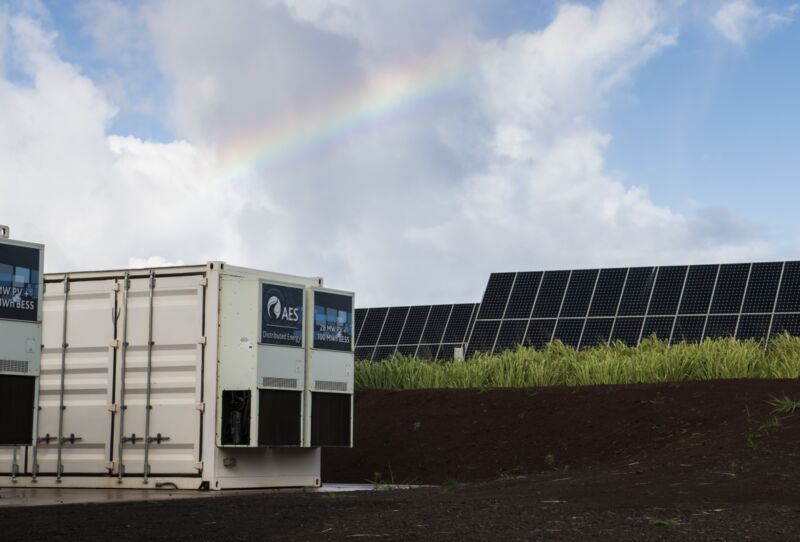Solar+battery in one device sets new efficiency standard

Enlarge / Existing solar+battery solutions involve two separated pieces of hardware. (credit: DOE)
The drop in battery prices is enabling battery integration with renewable systems in two contexts. In one, the battery serves as a short-term power reservoir to smooth over short-term fluctuations in the output of renewable power. In the other, the battery holds the power for when renewable power production stops, as solar power does at night. This works great for off-grid use, but it adds some complications in the form of additional hardware to convert voltages and current.
But there's actually an additional option, one that merges photovoltaic and battery hardware in a single, unified device that can have extensive storage capacity. The main drawback? The devices have either been unstable or have terrible efficiency. But an international team of researchers has put together a device that's both stable and has efficiencies competitive with those of silicon panels.
Solar flow batteriesHow do you integrate photovoltaic cells and batteries? At its simplest, you make one of the electrodes that pulls power out of the photovoltaic system into the electrode of a battery. Which sounds like a major "well, duh!" But integration is nowhere near that simple. Battery electrodes, after all, have to be compatible with the chemistry of the battery-for lithium-ion batteries, for example, the electrodes end up storing the ions themselves and so have to have a structure that allows that.
Read 12 remaining paragraphs | Comments